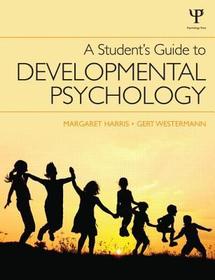
Art and Creativity in an Era of Ecocide
Embodiment, Performance and Practice
- Publisher's listprice GBP 24.99
-
11 938 Ft (11 370 Ft + 5% VAT)
The price is estimated because at the time of ordering we do not know what conversion rates will apply to HUF / product currency when the book arrives. In case HUF is weaker, the price increases slightly, in case HUF is stronger, the price goes lower slightly.
- Discount 20% (cc. 2 388 Ft off)
- Discounted price 9 551 Ft (9 096 Ft + 5% VAT)
Subcribe now and take benefit of a favourable price.
Subscribe
11 938 Ft

Availability
Estimated delivery time: In stock at the publisher, but not at Prospero's office. Delivery time approx. 3-5 weeks.
Not in stock at Prospero.
Why don't you give exact delivery time?
Delivery time is estimated on our previous experiences. We give estimations only, because we order from outside Hungary, and the delivery time mainly depends on how quickly the publisher supplies the book. Faster or slower deliveries both happen, but we do our best to supply as quickly as possible.
Product details:
- Publisher Bloomsbury Publishing (UK)
- Date of Publication 12 June 2025
- Number of Volumes Paperback
- ISBN 9781350237230
- Binding Paperback
- No. of pages280 pages
- Size 232x154x16 mm
- Weight 481 g
- Language English
- Illustrations 12 bw illus 771
Categories
Long description:
What can creativity achieve in an era of ecocide? How are people using creative and artistic practices to engage with (and resist) the destruction of life on earth? What are the relationships between creativity and repair in the face of escalating global environmental crises?
Across twelve compelling case studies, this book charts the emergence of diverse forms of artistic practice and brings together accounts of how artists, scholars and activists are creatively responding to environmental destruction.
Highlighting alternative approaches to creativity in both conventional art settings and daily life, the book demonstrates the major influence that ecological thought has had on contemporary creative practices. These are often more concerned with subtle processes of feeling, experience and embodiment than they are with charismatic 'eco-art' works. In doing so, this exploratory book develops a conception of creativity as an anti-ecocide endeavour, and provides timely theoretical and practical insights on art in an age of environmental destruction.
Table of Contents:
List of Illustrations
Introduction, Anna Pigott (Swansea University, UK), Owain Jones (Bath Spa University, UK) and Ben Parry (Bath Spa University, UK)
1. A conversation through listening to everyday walks, Michelle Duffy (University of Newcastle, Australia), Kaya Barry (Aalborg University, Denmark), Caroline Scarles (University of Surrey, UK), Peter Varley (Northumbria University, UK) and Michele Lobo (Deakin University, Australia)
2. Entangled encounters with an estuary: Making-with, making as coping,Lydia Halcrow(Independent researcher, UK)
3.Behavioural adaptation through reflective imagination via artistic experience in an era of ecocide, Alejandra Wah (University of Groningen, Netherlands)
4. Deep materialism and care-taking: A study of material relationships for the twenty-first century, Alison Harper (Independent researcher, UK) and Sarah Chave (University of Exeter, UK)
5. Willow, weaving, worlding and a politics of change, Anna Pigott (Swansea University, UK)
6. Be mindful: Plant intelligence, art and patience,Sue Spaid (Independent researcher)
7.The beckoning silence: Reconnecting humanity and nature on the Silent Trail, Laila Chin-Hui Fan (Ph.D. candidate at National Normal University, Taiwan)
8.Ancient boglands and the Irish peat industry: Does culture mitigate ecocide? Tim Collins (Collins & Goto Studio, UK) and Reiko Goto (Collins & Goto Studio, UK)
9.Interim Bangalore: Bodies as Sensory Data Collectors, Laura Denning (Independent researcher)
10.Rewriting the machinic Capitalocene: Using speculative fictional methods, Charlie Tweed (Bath Spa University, UK)
11. Incendiary: Curating art protest in the toxic airs of Stroud's rural green idyll, Patricia Brien(Ph.D. candidate at Bath Spa University, UK)
12. A zone to defend: The role of art and ritual in prefiguration, Ben Parry (Bath Spa University, UK)
13. Did the sky used to be full of birds? Claire Loder (Independent researcher, UK)
Index


Before the Coffee Gets Cold Lib/E
21 268 HUF
19 566 HUF

Introduction to Condensed Matter Theory, Volume II: Collective Phenomena
44 374 HUF
39 049 HUF

A Student's Guide to Developmental Psychology
23 882 HUF
19 106 HUF








